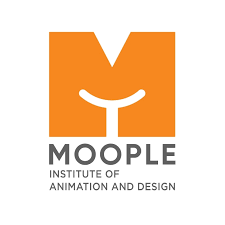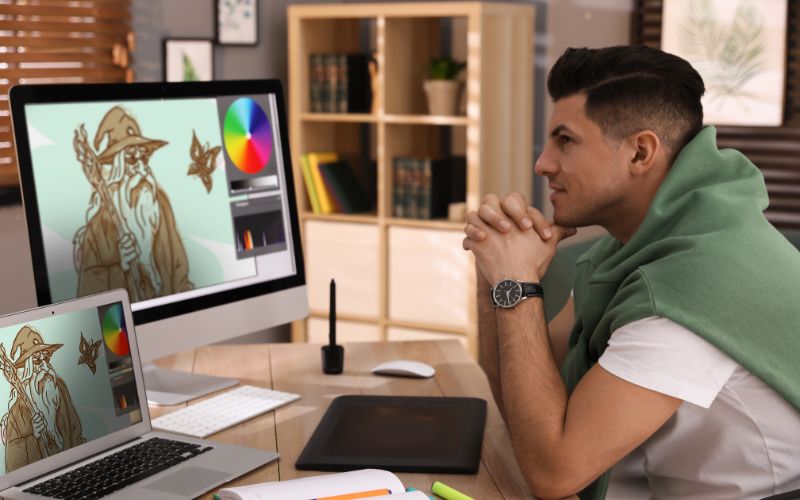When people first get to watch an anime, they’d wonder, “Wow! How do they even make something like that?” Over the years, as you will learn about animation, you will realise that it has a steep learning curve. From learning about keyframes to perspective and motion, there is a lot to take in through flat screens and complex interfaces.
Then came animation tools in virtual reality.
For the first time, animation wasn’t just clicking or dragging with a mouse; you could be sculpting in space. The canvas is right in front of you, hanging in thin air, and you could walk around it, modify a character with your hands, and animate motion as if you were directing an orchestra. The experience reshapes your work and learning.
Once experienced, it will raise a question that stays with most: Are AR and VR merely interesting technologies, or are they truly shaping the future of animation training? From how things have progressed, we now have our proper answer.
What Does AR/VR Training in Animation Look Like?
Augmented Reality (AR) blends digital elements with the real world, like how Pokémon Go did. On the other hand, Virtual Reality (VR) uses headsets and motion controllers to immerse you in a digital environment. For animation training, both offer something truly valuable: experiential learning.
Now, instead of tutorials, you can put on your VR glasses, manipulate the limbs of a character, and see the animation unfold instantly. In a virtual studio, you aren’t just observing, you are participating.
AR and VR tools for animation allow learners to:
- Draw and sculpt in the air.
- Animate objects by physically moving them.
- Experience the scene from the perspective of the character.
- Practice principles like timing, spacing, and squash-and-stretch in real-time.
Tvori, Adobe Aero, Quill, and Masterpiece Studio Pro are some of the software out there that are already providing this type of interaction. They provide a space for users to focus on creativity and storytelling, without being held back by their non-techy backgrounds.
Why Traditional Animation Learning Had Gaps
Most people starting in animation begin by watching tutorials and imitating them. But learning 3D animation through 2D interfaces isn’t easy. Understanding depth, spatial concepts, and movement is difficult through a flat monitor.
The Challenge of Visualising Complex Concepts
Traditional animation education often requires learners to mentally illustrate complex ideas in visual forms. Concepts like camera movement, lighting, or physical interactions must be imagined before they can be illustrated. This mental leap can be very difficult, especially for those who aren’t gifted with a strong grasp of 3D space.
When Software Becomes a Barrier
The standard software used in various training programs is often difficult for beginners. They come with a steep learning curve, and navigating through layers of menus and understanding technical terms can be a daunting task for beginners. This often leads to frustration, and the spirit of experimentation and learning is crushed.
How AR and VR Make Learning More Intuitive
Now, AR and VR don’t eliminate all these challenges, but they help bridge the gap between theory and experience. Instead of imagining things, you can play them out in VR and observe them from multiple angles. You can reposition things, refine, and change, not by guessing but by actually doing.
And that changes everything.
Why VR and AR are Game Changers
As you may have observed yourself, the best learning doesn’t happen just by reading or watching. It happens when you experience the process. That’s exactly what VR and AR offer. They let you feel the process in real time.
Interacting with Animation in Real Time
In virtual reality, you’re not just observing through a screen. You can interact with your character in various ways as if it were physically there. That hands-on access brings clarity and confidence, especially when animating some complex movement or proportions.
Bringing the Real World into the Frame
Augmented reality opens another door. Imagine pointing your phone at a table and having your character appear on it. This provides a completely new view on how your character may appear under natural light, in the real world. This combination of real and virtual helps provide a far more intuitive grasp of space, depth, and motion.
Learning Through Instant Feedback
One of the most valuable aspects of AR and VR is the immediate feedback. You move your hand, and the model responds. You reposition the light source, and shadows adjust immediately. This instant cause and effect helps learners develop their senses rapidly, which took a lot of time earlier.
The fear of failure is also reduced. If something looks wrong, you can make a quick adjustment and test again. That freedom to try helps enormously in building skills naturally and enjoyably.
Real Tools Bringing AR and VR to Life
The great thing is, these immersive learning experiences aren’t just futuristic concepts anymore. They are already happening in classrooms and animator courses around the world.
Unity & Unreal Engine
Take programs like Unity and Unreal Engine, for example. Both have invested heavily in AR and VR accessible to beginners. With just a VR headset, anyone can enter a virtual studio and design their character. They can animate scenes and even stimulate camera movements.
Tvori & Masterpiece Studio
Then there are specialised tools like Tvori and Masterpiece Studio. These are designed for professionals who want to animate in 3D using hand gestures. You can sketch and animate right inside the VR environment, without requiring multiple software programs.
Adobe Aero & Spark AR
AR platforms like Adobe Aero and Spark AR let students place their creation in real real-world context through a mobile screen. This makes understanding how a character fits into a physical environment so much easier.
Blender, Maya, and More
Even traditional animation software is evolving. Blender, Maya and others are integrating more immersive features, like VR sculpting and real-time feedback. This means that immersive tech is on to becoming a core part of how animation is taught and practised.
Limitations of AR and VR You Can’t Ignore
AR and VR aren’t magical fixes. They are powerful, but not without drawbacks. For starters, the hardware is expensive. While prices are improving, access to AR-ready devices is still a barrier for many individuals and institutions.
Fundamentals Still Matter
Also, while AR and VR can help understand space and movement, they can’t replace fundamentals. Concepts like timing, weight, and storytelling still require practice.
Hardware Requirements
AR and VR content demands powerful hardware due to large file sizes and processing power. So even with the tools, not everyone can make use of them.
Not Just Add-Ons Anymore
Despite these bumps, the progress is undeniable. For those interested in animation, AR and VR aren’t just nice accessories; they are becoming vital tools required for it.
Start Your Animation Training Journey With Moople Academy
When you first start learning animation, it’s normal to feel excited, but also a bit lost. With so many tools and techniques out there, it can be hard to know where to begin. That’s why your starting point truly matters. At Moople Academy, we help learners gain confidence in animation, whether you are just a beginner or a working professional looking to develop new skills.
Here’s why we are one of the top choices for animation training among students.
- Courses That Go Beyond Just Learning Software: We teach you how animation works, from storytelling and design to the finer points of movement. And yes, we have started weaving our animation courses with AR and VR to keep you in step with industry trends.
- Hands-On Learning, Real Outcomes: Our hands-on approach to teaching and learning makes us different from others. You’ll build real projects, learn from working professionals, and receive feedback that helps you grow. Many of our students have gone to work in studios or freelance with strong portfolios.
- Guiding You From First Steps to Career Confidence: When you are just starting, what you need isn’t just tools or software: it is direction. That’s why we make sure our students get proper guidance on building a strong portfolio, choosing their career path, and understanding how the industry really works.
Whether you want to create films, games, or digital content, we’ll help you move from curiosity to capability, building a career you believe in.
Conclusion
Are AR and VR changing the animation future?
Yes.
These technologies facilitate understanding complex concepts in simpler ways and introduce animation learning into a more hands-on, experiential space. They’re not replacing the tried and true, but they make learning and practice better.
And no, you don’t have to have nifty equipment or be tech-savvy to begin. A bit of curiosity, artistic passion, and proper guidance can get you far.
Animation is evolving. If you’re considering learning, there’s never been a better time to get started.
FAQs
Q: Do I need a VR headset to start learning animation at Moople Academy?
No. Although we are incorporating immersive tools into our education, you don’t need a VR headset to get started. Our 3D animation courses use industry-standard software that can run on most computers.
Q: Are AR and VR animation skills relevant in the industry?
Yes. Game studios, game developers, and even advertising firms are now seeking artists who have a grasp of immersive technology. Such skills will lead to promising careers in emerging fields such as metaverse design, virtual production, and so on.
Q: What type of projects will I be working on as part of the course?
You will develop a range of short animation cycles, character rigs, and even learn how to construct environments within 3D space. As part of our skill-based animation learning, some projects will have immersive aspects depending on your course path.

